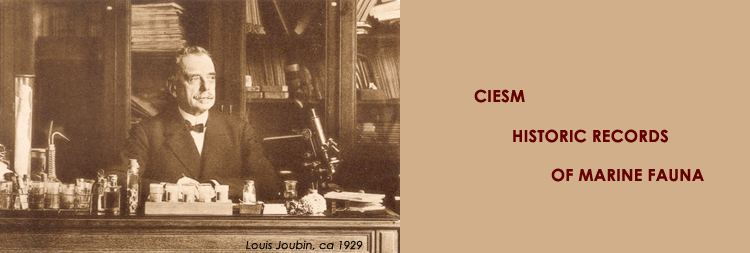

 |
 |
|||||||||

|
In 1926, the sixth General Assembly of our Commission, gathered in Venice, agreed to launch the publication of the Faune et Flore de la Méditerranée, with the aim of making an inventory of marine species in the Mediterranean Sea. Louis Joubin (1861-1935), a professor of biological oceanography at the Institut Océanographique de Paris and first Director of the Office scientifique et technique des pêches maritimes (a distant ancestor of today's Ifremer) was entrusted by CIESM to supervise and coordinate this initiative. An active contributor to the activities of the Commission since its foundation, he was an unflagging, eminent naturalist and oceanographer who devoted most of his life to the study of cephalopods. During the sixth Campaign of Prince Albert I onboard the second Princesse Alice, Prof. Joubin made observations on fresh material collected around the Azores and Canary Islands. His scientific skills were soon noticed by Prince Albert I, who assigned him the responsibility to study the squids sampled during the following oceanographic campaigns. Thanks to his scientific knowledge, enthusiasm and expertise over many taxonomic groups, the “Fiches Faunistiques de la mer Méditerranée” grew quite rapidly under his leadership: between 1927 and 1934, no less than 476 marine species, carefully described by 40 world-renowned taxonomists, were published at irregular intervals in this series. The original format conceived by Louis Joubin of the Fiches as separate species sheets allowed the possibility to rearrange their classification and insert “future”, new species descriptions. The death of Professor Joubin in 1935 brutally interrupted the publication of the series that was to resume… 21 years later, in 1956, with the printing of six further, and last species sheets. Each species sheet provides a comprehensive, detailed historic account of the morphology and biology as well as the geographic and depth distribution of Mediterranean marine species. This Series offers a unique glimpse on marine biodiversity in the Mediterranean Sea, as seen and depicted by pioneers of marine biology. |